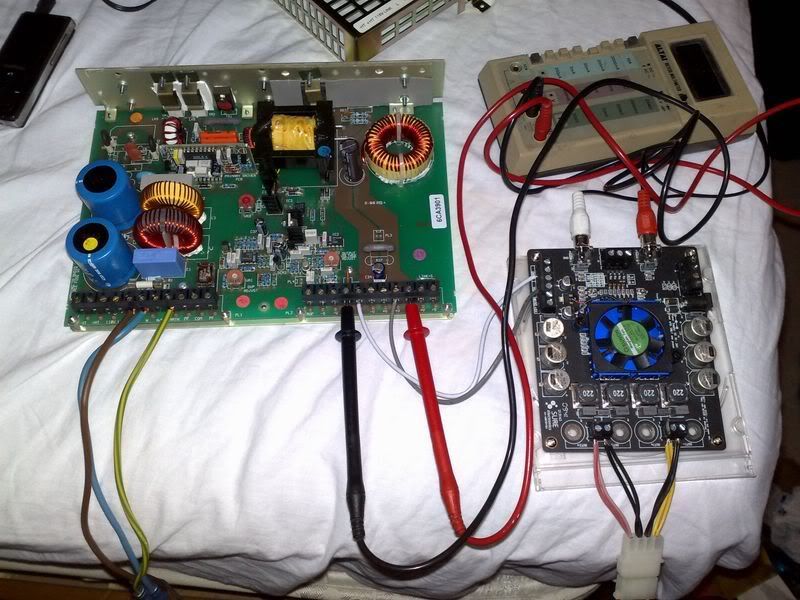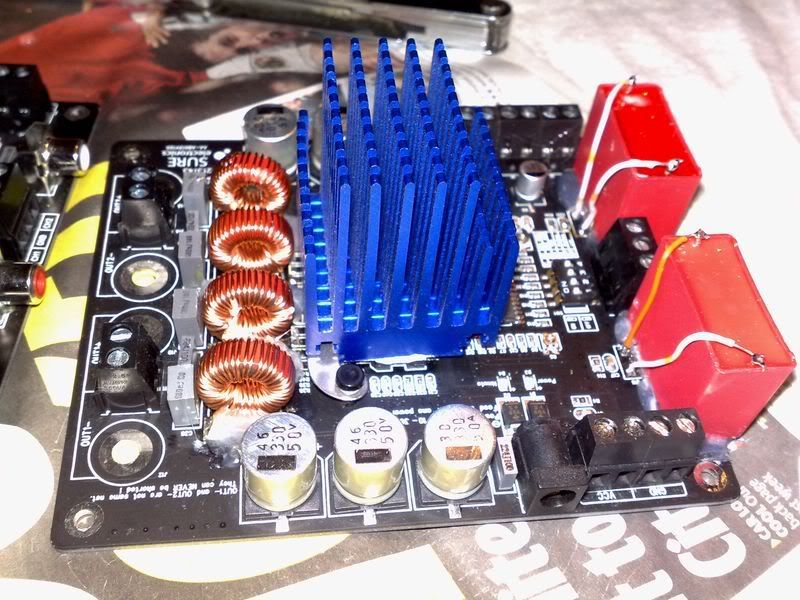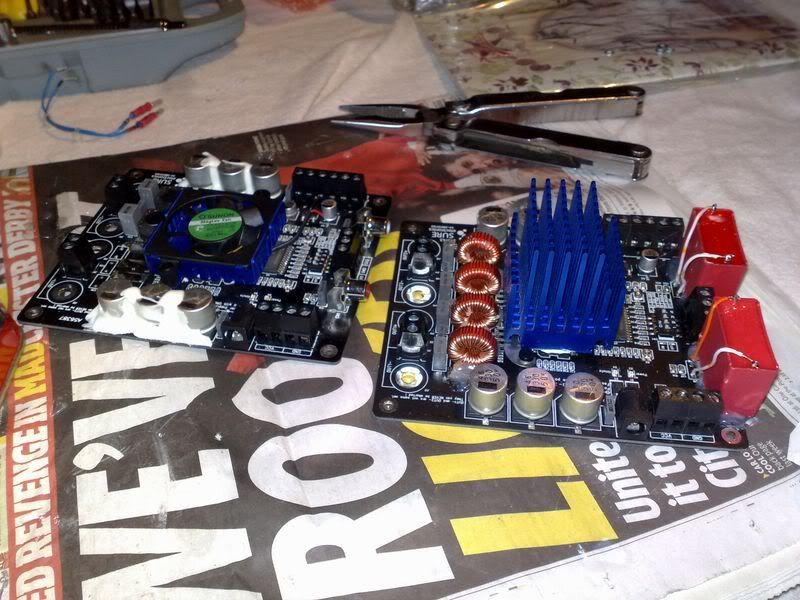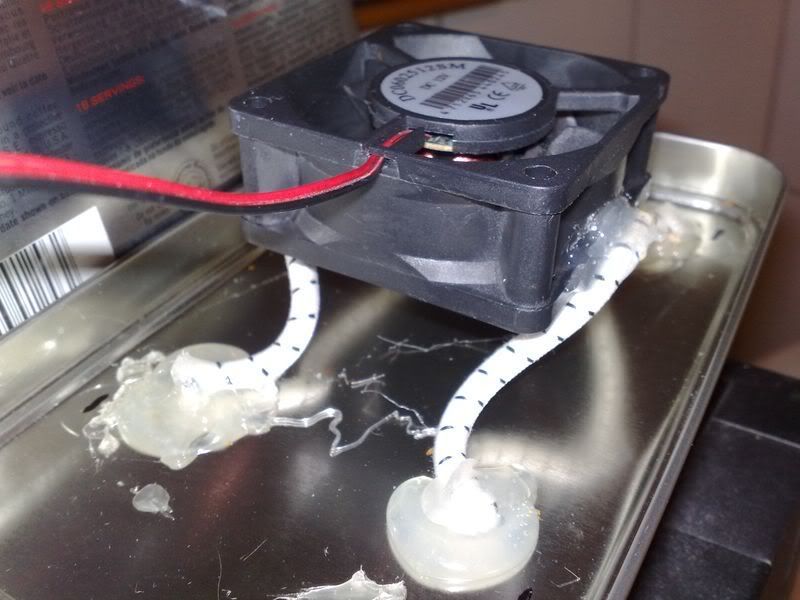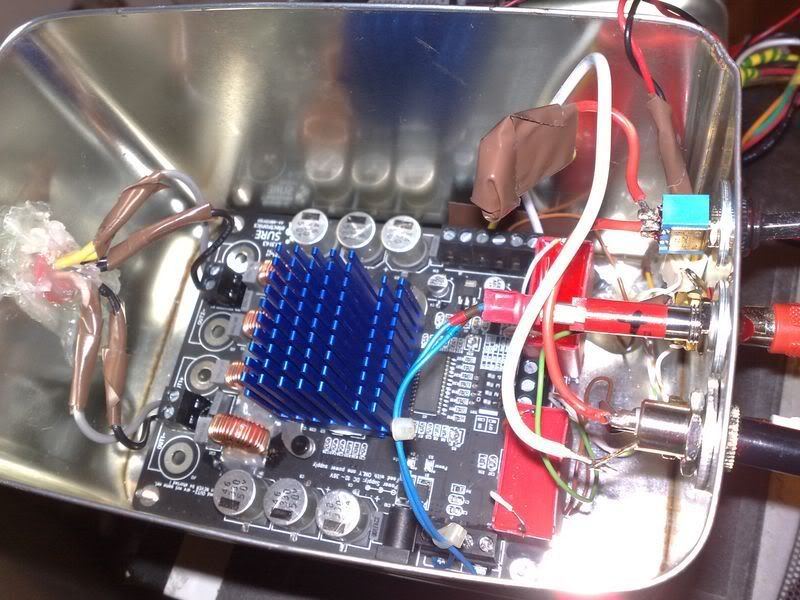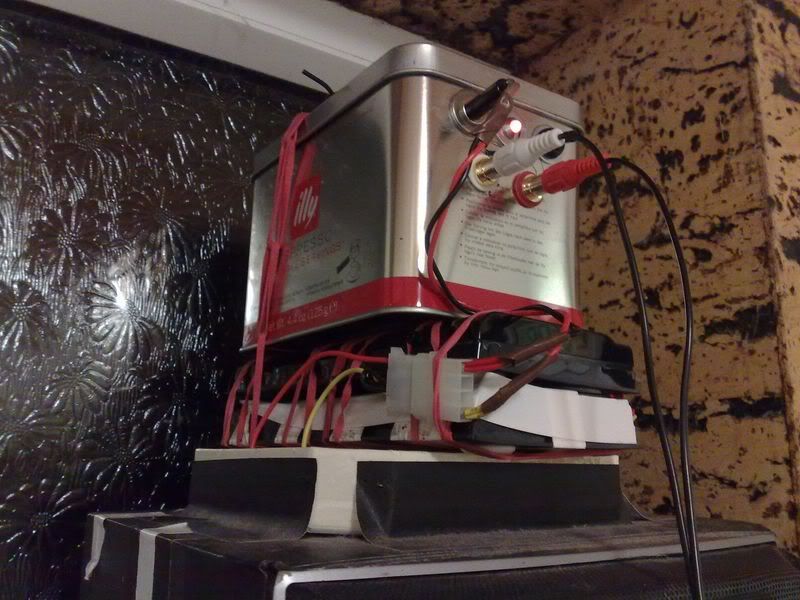I've been a little lazy recently, as I have taken to modding existing amp modules as opposed to soldering them from scratch. Enter the Sure electronics TC2000+2xTP2050 board.
Product spec page here:
http://www.sureelectronics.net/goods.php?id=918
The pics are a little rushed as I find a cam phone is far more handy than a DSLR when in soldering, drilling, etc... Testing the standard board:
Now, the board in standard trim sound ok, but is lacking bass - but at around £25 for the board, you can't expect perfection...
The lack of bass if due to the poor choice of a 1uF coupling cap, which means bass below 50Hz or so will be rolled off.
So, simply replacing the coupling caps (C16 and C24) which are the closest caps to the RCA sockets with some nice film caps if your choice, as long as they are 2.2uF or more, will give you give you back the bass response. I used 4.7uF as it was all I had at the time, which gives a small turn on pop.
Also, the output inductors (which are used to filter out the class-d switching noise) leave some room for improvement. I managed to get some 10uH toroids from ebay, and these use thicker wire which seems to give better sound. The dynamics are certainly improved to my ears at least.
Finally, I replaced the stock heatsink with a passive one. The fan on the stock heatsink shares the same 5v rail as the TC2000 chip, which causes a constant clicking sound thru the speakers.
Board after these mods:
I removed the RCA connectors also, to make room for the larger coupling caps, here's a shot with the standard board on the left, and modded board on the right:
I did eventually fit a fan, but used a separate L7805 to supply the fan, this totally eliminates the clicking sound. Funky elastic mounting should eliminate vibrations:
Hot glue is great!

I had an old coffee tin which turned out to be an ideal size for this board, even if the wiring is a little messy:
Here it is in action:
Those black things below it are laptop batteries, each giving out 12v, wired in series so I get 24v... I use this to power some old midi speakers. Not exactly hifi, but it's nice to be able to use them outside or during a power cut!

I have more of these boards now, and plan to use them to bi-amp some 2 way bookshelf speakers, which should be a little more revealing then Aiwa midi speaker, but I'm still ordering parts for this right now... I have also tried this amp out with some Mission 700 bookshelf speakers, and with a good source sound good. If you like the sound of a TA2020 based amp then this sounds similar but with better dynamics.
I've only covered fixing some of the shortfalls of this board, there are far more mods and detailed info over at the DIYaudio thread, including some crazy huge self wound output inductors.

I have just soldered together the grubDAC, but I bridged 2 pins on the PCM2706 DAC and can't seem to get it right! Any tips?
I have purchased some .8mm solder braid and a new solder tip as mine is crapola but those won't be here for a day or 2.
Anyway it looks awesome lol, soooo tiny. I just wish I could fix this solder bridge!
Nice work, I have yet to attempt any SMD serious SMD soldering, but I'm going to have to eventually as I plan to upgrade my AK4393 DAC's to AK4396's in my DCX.
Did you practice first on any dead computer parts first or dive straight in?
Hoping to build some IPL transmission lines later this year, or possibly pay someone to design some for me. Want to use a scan speak tweeter, this one. Its closed back so can put in any enclosure and it wont affect the sound.
Ideally want to use car audio as they are 4 ohms so will get the most out of amp!
https://www.wilmslow-audio.co.uk/catalog/product_info.php?cPath=22_35_178&products_id=179
in car audio land, known as Genesis R1's.
You make is sound like you're going to be short of SPL... In a car where there is very little distance between tweeter and ear.
99% of the time, a tweeter is far more sensitive than the midrange... What midranges are you using? 114dB+ at 2KHz+ is going to be rather painful!










